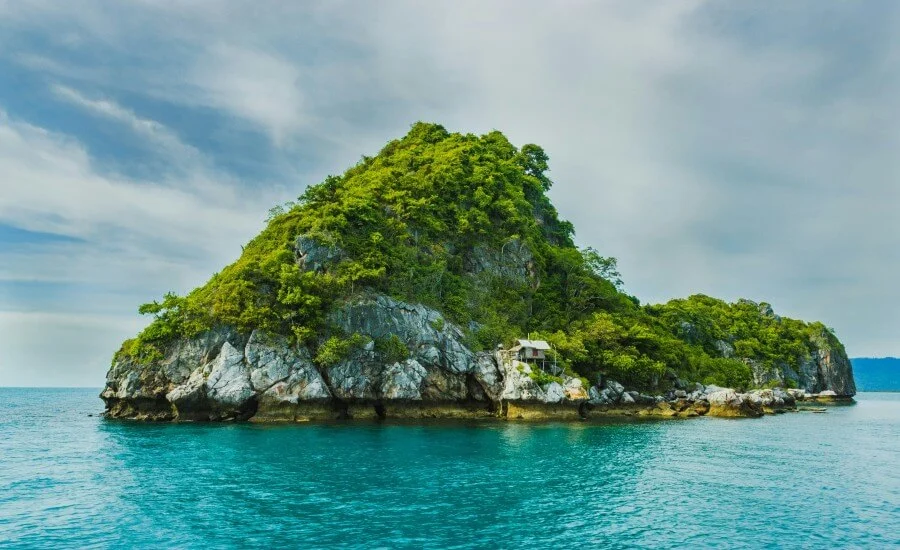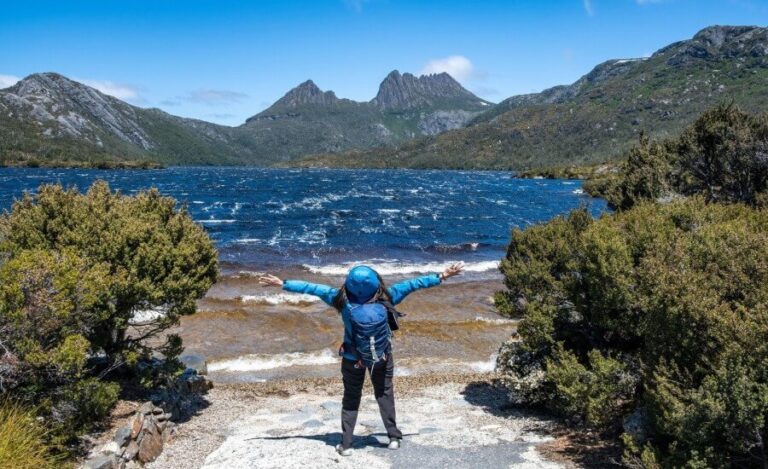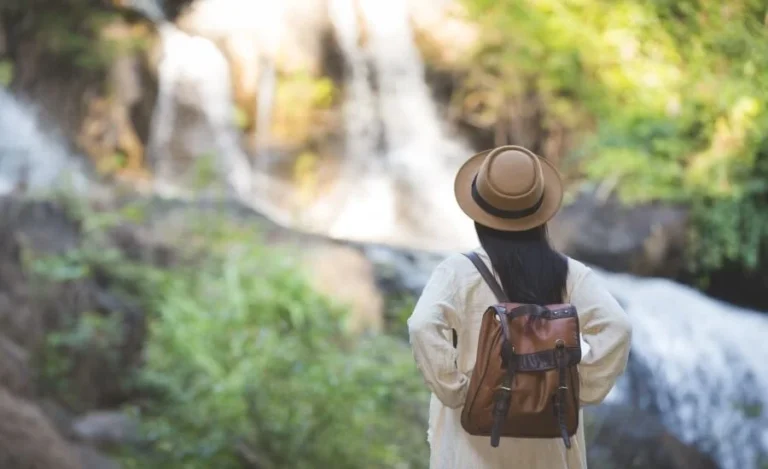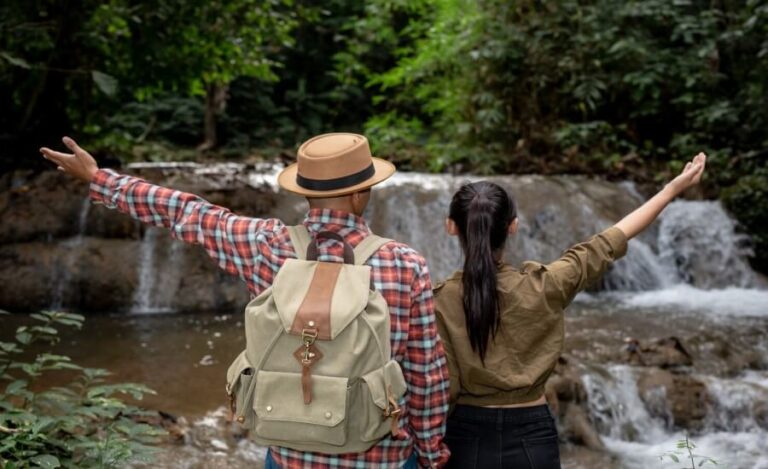
There’s something profound about crossing water to reach an island a natural boundary that creates instant separation from mainland concerns and routines. When that island belongs to an archipelago, the experience deepens into something even more transformative: a journey between worlds, each with its own character yet connected by shared waters and cultural threads.
While famous island chains like the Greek Cyclades, Hawaiian Islands, and Thailand’s Phi Phi attract masses of visitors (and their accompanying digital documentation rituals), the world contains dozens of lesser-known archipelagos where authentic island life continues largely undisturbed by tourism infrastructure.
These hidden island constellations offer something increasingly rare: the chance to experience multiple distinctive environments without encountering crowds, excessive commercialization, or the pressure to create social media content at every vista.
This guide explores seven extraordinary archipelagos where mindful travelers can experience the magic of island-hopping while maintaining the kind of presence and connection that excessive tourism and digital distraction often diminish.
These destinations aren’t completely undiscovered—they all offer sufficient infrastructure for responsible travel—but they remain refreshingly uncrowded, allowing for deeper engagement with local communities, natural environments, and the transformative experience of moving between islands at a human pace.
What Makes Island-Hopping a Transformative Experience?

Before exploring specific archipelagos, it’s worth understanding why island-hopping creates such powerful opportunities for mindful travel and digital disconnection.
Natural Boundaries and Transitions
Unlike continental travel where boundaries blur, islands create natural containers for experience—distinct worlds with clear beginnings and endings. The water crossings between them serve as meaningful transitions, creating what psychologists call “event boundaries” that enhance memory formation and presence.
These physical transitions mirror internal ones, as research shows that water crossings naturally trigger shifts in consciousness. The combination of rhythmic boat movement, horizon contemplation, and the literal separation from previous environments creates ideal conditions for mental reset and heightened awareness.
Forced Deceleration
Island-hopping necessitates surrendering to transportation rhythms beyond your control—tide patterns, boat schedules, weather conditions. This natural constraint counters the “on-demand” expectations of digital life, creating what temporal researchers call “natural time” experiences that realign travelers with environmental rhythms rather than artificial schedules.
The between-island journeys also impose technological limitations, as many smaller boats lack connectivity, power outlets, or weather protection for devices. These constraints naturally encourage putting devices away and engaging directly with the journey itself.
Varied Experiences Within Coherent Contexts
What distinguishes archipelago travel from either single-island or continental experiences is the perfect balance between variety and coherence. Each island offers distinctive landscapes, communities, and activities, yet remains connected through shared waters, cultural patterns, and economic relationships.
This combination creates ideal conditions for what learning theorists call “comparative understanding”—seeing how similar environmental conditions create both common patterns and unique adaptations, revealing deeper insights than either complete sameness or total difference could provide.
1. The Mergui Archipelago: Myanmar’s Forgotten Island Universe

Off Myanmar’s far southern coast lies one of Asia’s last genuinely frontier archipelagos—approximately 800 islands spanning 400 kilometers of the Andaman Sea, most uninhabited and many still without names on official maps. Home primarily to the seafaring Moken people (sometimes called “sea gypsies”), this vast marine territory has remained largely isolated due to Myanmar’s decades of political seclusion, creating an extraordinary opportunity to experience islands as they might have been centuries ago.
The Archipelago Experience
The Mergui islands feature pristine white-sand beaches backed by jungle-covered hills, vibrant coral reefs accessible from shore, and modest fishing communities where daily life continues with minimal outside influence. The absence of major development means most islands remain without permanent electricity, creating extraordinary night sky experiences and natural sleep patterns governed by sunrise and sunset.
What makes this archipelago exceptional for mindful travel is the combination of extraordinary biodiversity—both marine and terrestrial—with the living maritime culture of the Moken people, whose traditional ecological knowledge and boat-based lifestyle offers profound alternatives to land-focused, technology-mediated existence.
Island-Hopping Practicalities
While previously requiring complicated permissions, the archipelago has gradually opened to independent travelers through a limited number of operators based in Kawthaung, Myanmar’s southernmost port. Small-boat expeditions lasting 5-7 days cost approximately $700-1,200 per person, including simple accommodation on deserted beaches or in small village homestays, all meals, and guided interactions with Moken communities when appropriate.
The experience remains decidedly low-tech, as most boats offer only solar-powered lighting and basic facilities. This technological simplicity naturally encourages engagement with immediate surroundings rather than digital distraction. Many travelers report that the enforced digital detox becomes one of the journey’s most valued aspects, with the rhythm of island crossings creating natural alternatives to the dopamine loops of social media and constant connectivity.
Mindful Moments
The most remarkable experiences in Mergui come through engagement with the Moken maritime lifestyle—particularly understanding their relationship with the ocean. Community-respectful visits arranged through responsible operators might include:
- Learning traditional free-diving techniques that allow Moken people to remain underwater for extraordinary periods through controlled breathing and distinctive eye adaptations
- Observing traditional boat-building methods using hand tools and techniques passed through generations
- Participating in sustainable fishing practices that demonstrate sophisticated ecological understanding
- Experiencing traditional navigation methods that rely on detailed observation of natural patterns rather than instruments
For travelers seeking to disconnect from technology-mediated experiences, the Moken demonstrate alternatives based on embodied knowledge and direct environmental relationship—approaches increasingly validated by contemporary neuroscience despite their ancient origins.
2. The Bazaruto Archipelago: Mozambique’s Marine Sanctuary

While many African safari destinations have become heavily commercialized, Mozambique’s Bazaruto Archipelago offers a marine counterpart to wildlife experiences with a fraction of the visitors. This chain of five main islands off the country’s southern coast combines extraordinary biodiversity—including the last viable dugong population in the western Indian Ocean—with vibrant coastal cultures reflecting Portuguese, Arab, and Bantu influences.
The Archipelago Experience
What distinguishes Bazaruto is its remarkable diversity of environments within a compact area—from towering sand dunes that could be mistaken for the Sahara, to mangrove forests teeming with birdlife, to some of Africa’s most pristine coral reefs. This variation creates natural invitations to presence, as travelers continually encounter new ecosystems requiring fresh attention and engagement.
The islands support small fishing communities maintaining traditional practices, particularly dhow sailing—the indigenous vessel of the Indian Ocean featuring distinctive triangular sails. These communities continue rhythms of life governed by tides and seasons rather than digital notifications, creating natural immersion in alternative temporal experiences.
Island-Hopping Practicalities
While the archipelago contains a few luxury resorts, mindful travelers can experience the islands through locally operated dhow safaris that cost approximately $120-180 per day inclusive of simple beach camping accommodation, freshly caught seafood meals, and guided activities. These journeys typically begin from the mainland town of Vilankulo, where several community tourism associations coordinate multi-day sailing experiences with local captains.
The traditional dhows lack modern amenities by design—no electricity, running water, or connectivity—creating natural technological boundaries that enhance rather than diminish the experience. The sail-powered travel between islands also demonstrates alternatives to fossil fuel dependency, with movement dictated by wind patterns rather than on-demand expectations.
Mindful Moments
The archipelago’s national park status has preserved not just environments but traditional ecological relationships:
- Participating in community fishing practices that maintain sustainable harvesting through traditional knowledge systems
- Learning celestial navigation techniques still employed by local sailors
- Observing the intricate relationship between mangrove ecosystems and local economies
- Experiencing the remarkable silence of massive sand dunes at dawn—a natural soundscape increasingly rare in our mechanized world
Many travelers report that the combination of digital disconnection, movement governed by natural elements rather than schedules, and immersion in cyclical rather than linear time creates profound perceptual shifts that persist long after returning home.
3. The Kornati Archipelago: Croatia’s Stone Labyrinth

While Croatia’s Dalmatian coast has experienced exponential tourism growth, the remarkable Kornati Archipelago—89 islands and reefs packed into just 320 square kilometers—remains relatively untouched. These predominantly uninhabited limestone islands feature distinctive “crown” formations (vertical cliffs) facing the open sea, with gentler slopes on their mainland sides creating natural harbors and sheltered passages.
The Archipelago Experience
What makes Kornati extraordinary is the visible interplay between human cultivation and wild nature. For centuries, mainland families have practiced seasonal agriculture on these remote islands, creating elaborate dry-stone wall networks that divide the otherwise barren landscapes into geometric patterns visible from above. Yet despite this long human presence, the archipelago maintains a profound sense of wilderness and solitude.
The islands contain almost no permanent settlements, fresh water sources, or tourist infrastructure, creating natural limits to development that have preserved both environmental integrity and cultural practices. This absence of conventional amenities creates opportunities for experiences increasingly rare in contemporary Europe—nights without artificial light, silence unmarred by mechanical sounds, and landscapes where human presence remains visually evident yet harmonious with natural patterns.
Island-Hopping Practicalities
The archipelago is accessible primarily by private or charter boat from mainland towns like Murter or Zadar. Small wooden boats (traditionally used by local families accessing their island properties) can be chartered with captains for approximately €250-350 per day for groups up to 8 people, including guided navigation through the complex island channels and arrangement for overnight stays in simple fishermen’s houses or low-impact camping.
While more developed than some archipelagos in this guide, Kornati’s national park status prevents excessive infrastructure development. Most island stopover points offer only basic facilities—perhaps a simple family-run konoba (tavern) serving daily catch and local wine, with accommodation in stone houses lit by oil lamps rather than electricity. This simplicity creates natural technological boundaries while supporting traditional family economies based on seasonal fishing and olive cultivation.
Mindful Moments
The archipelago offers unique opportunities for understanding sustainable human-nature relationships maintained over centuries:
- Learning traditional dry-stone wall building techniques that create microclimate advantages in this harsh environment
- Participating in seasonal olive or fig harvesting with families maintaining ancient groves
- Understanding how the distinctive vegetation patterns reflect centuries of controlled sheep grazing that prevented erosion while providing livelihoods
- Experiencing traditional weather prediction methods developed by fishermen navigating these complex waters before meteorological technology
Many visitors report that the visible history in Kornati’s landscape—where human cultivation patterns dating back to Roman times remain evident—creates natural reflection on time scales beyond the accelerated pace of digital culture, offering perspective difficult to achieve in more developed environments.
4. The Bocas del Toro Archipelago: Panama’s Caribbean Microcosms

While much of the Caribbean has been transformed by mass tourism, Panama’s Bocas del Toro archipelago—a scattering of nine main islands and hundreds of smaller islets—maintains authentic island cultures and relatively undeveloped landscapes despite growing visitor numbers. The archipelago’s unique character comes through its remarkable cultural diversity, with Indigenous Ngäbe communities, Afro-Caribbean settlements, and Latin influences creating distinctive island identities within the compact archipelago.
The Archipelago Experience
What distinguishes Bocas del Toro is the remarkable variation between islands separated by small distances, creating natural comparative understanding of how different cultural groups adapt to similar environments. Islands like Bastimentos maintain traditional Afro-Caribbean stilt communities largely unchanged for generations, while nearby Solarte features indigenous Ngäbe settlements practicing traditional agriculture and forest management.
The archipelago’s relative isolation has preserved both cultural practices and natural environments, with extensive mangrove forests, intact coral reefs accessible from shore, and rainforest ecosystems covering island interiors. This environmental integrity supports experiences increasingly difficult to find in more developed Caribbean destinations.
Island-Hopping Practicalities
The archipelago’s main hub, Bocas Town on Isla Colón, provides necessary infrastructure without overwhelming traditional island patterns. From here, community-operated water taxis connect major islands for approximately $5-10 per journey, while arrangements with local fishermen allow access to more remote islets for approximately $20-40 for half-day excursions.
Simple guesthouses in traditional communities like Old Bank on Bastimentos or Salt Creek on Isla Popa offer accommodation from $25-60 per night, often in family homes or basic cabins without air conditioning or constant electricity—natural limitations that encourage adaptation to island rhythms rather than technological insulation from them.
Mindful Moments
The archipelago offers extraordinary opportunities for understanding different cultural adaptations to island environments:
- Learning traditional Ngäbe forest cultivation techniques that maintain biodiversity while providing sustainable livelihoods
- Participating in cacao processing with Afro-Caribbean communities maintaining traditional chocolate production methods
- Understanding traditional boat-building practices still using hand tools and forest-harvested materials
- Experiencing fishing methods adapted to specific island microclimates and marine habitats
Many travelers report that the combination of cultural diversity and environmental integrity creates natural opportunities for reflection on alternatives to homogenized global culture—particularly in Ngäbe communities where technological simplicity coexists with sophisticated ecological knowledge.
5. The Togian Islands: Indonesia’s Equatorial Time Capsule

Indonesia contains more than 17,000 islands, but few offer the combination of accessibility and preservation found in the Togian archipelago—a collection of 56 islands and hundreds of smaller islets stretched across Tomini Bay in Central Sulawesi. Positioned directly on the equator, these islands feature extraordinary marine biodiversity, intact rainforest ecosystems, and communities maintaining traditional maritime lifeways despite increasing connectivity with mainstream Indonesia.
The Archipelago Experience
What makes the Togians exceptional is their relative isolation even within Indonesia’s vast island network. Reached only by long boat journeys from mainland Sulawesi ports, the archipelago maintains a distinctive pace governed by natural rhythms rather than external schedules. The absence of banking facilities, consistent electricity, or reliable connectivity creates natural boundaries against the acceleration characteristic of digital culture.
The islands support three distinct cultural groups—the indigenous Togian people, sea-nomadic Bajau communities maintaining floating settlements, and migrant Bobongko people—each demonstrating different adaptations to similar environments. This cultural diversity within a compact geography creates natural comparative understanding of alternative lifeways.
Island-Hopping Practicalities
The archipelago’s modest tourism infrastructure centers around simple beach bungalow operations on islands like Kadidiri, Malenge, and Poyalisa, offering accommodation from $15-40 per night including meals. These locally owned operations arrange island-hopping journeys using traditional wooden boats for approximately $30-50 per day for small groups, allowing exploration of more remote islands with culturally appropriate community visits.
The irregular electricity (typically available only 6-8 hours daily), absence of mobile signals on most islands, and limited fresh water naturally moderate technology use while encouraging adaptation to island rhythms. Many visitors report that the initial adjustment to these limitations quickly transforms from perceived inconvenience to valued simplicity.
Mindful Moments
The archipelago offers extraordinary opportunities for understanding traditional ecological knowledge systems:
- Learning traditional free-diving fishing techniques from Bajau communities whose physical adaptations to aquatic life have become the subject of scientific research
- Participating in traditional boat building using hand tools and forest-harvested materials
- Understanding indigenous navigation methods using subtle environmental cues rather than instruments
- Experiencing traditional agricultural practices that integrate land and marine resource management
Many travelers report that the Togian’s relative isolation creates a distinctive temporal experience—what anthropologists call “island time”—that naturally counters the acceleration and fragmentation characteristic of digital culture.
6. The Haida Gwaii Archipelago: Canada’s Islands of Cultural Renaissance

Off British Columbia’s northern coast lies an archipelago that offers a powerful counternarrative to assumptions about indigenous cultural loss. Haida Gwaii (formerly the Queen Charlotte Islands) comprises over 150 islands where the Haida Nation maintains one of North America’s most intact indigenous cultures despite centuries of colonial pressure. This remarkable cultural resilience, combined with extraordinary temperate rainforest ecosystems and marine environments, creates a uniquely transformative destination for mindful travelers.
The Archipelago Experience
What distinguishes Haida Gwaii is the living renaissance of indigenous governance, artistic traditions, and ecological management occurring across the archipelago. The islands feature ancient village sites being reclaimed and maintained by Haida communities, contemporary cultural centers showcasing world-renowned artistic traditions, and innovative co-management systems blending traditional knowledge with contemporary conservation approaches.
The archipelago’s remoteness—reached by either flight or overnight ferry from mainland British Columbia—creates natural separation from conventional tourism patterns and urban rhythms. The islands’ north-south orientation also produces remarkable ecological variation within relatively short distances, from sheltered eastern shores to wild Pacific coastlines pounded by uninterrupted ocean swells.
Island-Hopping Practicalities
While not as budget-friendly as some archipelagos in this guide, Haida Gwaii offers meaningful cultural immersion through indigenous-led experiences. The Haida House at Tllaal and similar community-based operations provide structured cultural experiences from approximately $250-350 per day including accommodation, meals, and guided activities led by Haida knowledge keepers.
For more independent exploration, local water taxi services connect main islands, while community-based tour operators arrange journeys to more remote locations, particularly in the UNESCO World Heritage Site of Gwaii Haanas in the archipelago’s southern section. These guided experiences typically cost $200-300 per day but provide essential cultural context while ensuring appropriate protocols and permissions.
Mindful Moments
The archipelago offers extraordinary opportunities for understanding indigenous approaches to sustainability and cultural continuity:
- Learning traditional food harvesting practices that maintain resource abundance through sophisticated management systems
- Participating in cultural events where oral knowledge transmission continues despite technological alternatives
- Understanding traditional navigation and weather prediction methods still employed by Haida mariners
- Experiencing contemporary adaptations of traditional practices that demonstrate resilience rather than static preservation
Many visitors report that exposure to Haida governance systems—which explicitly incorporate responsibility to future generations in current decision-making—creates powerful reflection on alternatives to the short-term thinking prevalent in digital culture and conventional economics.
7. The Vava’u Archipelago: Tonga’s Whale Kingdom

In the South Pacific’s vast expanse lies a compact archipelago where one of nature’s most extraordinary phenomena occurs annually with remarkable reliability. Tonga’s Vava’u group—61 islands, most uninhabited, clustered within 23 square kilometers—hosts approximately 2,000 humpback whales each year between July and October. These marine mammals migrate from Antarctica to breed and give birth in Vava’u’s sheltered waters, creating one of the world’s most reliable and intimate whale encounter opportunities.
The Archipelago Experience
What makes Vava’u exceptional beyond whale encounters is its authentic Polynesian character, largely unchanged despite increasing tourism. The islands support traditional Tongan communities where ancient cultural patterns—particularly around community organization, land stewardship, and traditional navigation—continue alongside thoughtful adaptation to contemporary influences.
The archipelago’s compact geography creates ideal conditions for exploration by traditional outrigger canoes or simple motorized boats, with dozens of protected anchorages, uninhabited beaches, and limestone caves accessible within short distances. This combination of cultural integrity and environmental diversity supports experiences increasingly rare in more developed Pacific destinations.
Island-Hopping Practicalities
The archipelago’s main hub, Neiafu, offers necessary infrastructure without overwhelming traditional patterns. From here, locally operated island-hopping journeys using traditional or simple modern boats cost approximately $50-100 per day for small groups, including guided activities and beach picnic meals featuring local specialties.
Simple guesthouses and beach fales (traditional open-air Polynesian structures) offer accommodation from $30-70 per night, often in family compounds or community-operated facilities where absence of air conditioning, consistent electricity, or connectivity creates natural alignment with island rhythms rather than imported expectations.
Mindful Moments
The archipelago offers extraordinary opportunities for understanding traditional Polynesian relationships with ocean environments:
- Learning traditional outrigger canoe handling techniques still employed for inter-island travel
- Participating in traditional food gathering and preparation methods that demonstrate sophisticated resource management
- Understanding traditional celestial navigation systems that enabled Polynesian cultures to conduct history’s most extensive maritime migrations
- Experiencing whale encounters guided by cultural protocols that emphasize relationship rather than consumption
Many travelers report that witnessing the extraordinary parental behaviors of humpback whales—particularly the teaching relationships between mothers and calves—creates natural reflection on intergenerational knowledge transmission increasingly fractured in digital culture.
Mindful Engagement: Practices for Deepening Island-Hopping Experiences

Regardless of which archipelago you choose to explore, certain practices enhance the transformative potential of island-hopping journeys while naturally reducing technological dependency:
The Island Comparison Journal
Instead of constant photo documentation, develop a structured comparison practice:
- Create a specific format for documenting each island, including:
- Three distinctive physical characteristics
- Two observable cultural adaptations to island conditions
- One quality that connects this island to others in the archipelago
- Use analog methods—handwritten journals or field sketches—rather than digital documentation
- Review previous entries when arriving at each new island to deepen comparative understanding
- Create synthesis entries exploring patterns across multiple islands
This practice not only creates more meaningful records than scattered digital images but trains perception toward deeper patterns rather than superficial differences.
The Water Crossing Meditation
Traditional cultures worldwide recognize water crossings as natural thresholds deserving mindful attention:
- During inter-island journeys, establish a simple meditation practice
- Focus attention on the sensory experience of transition—the sounds of water, motion of the vessel, changing light qualities
- As one island recedes and another approaches, notice your internal state shifting
- Upon arrival, maintain silence for several minutes to fully register the transition
This practice leverages the natural boundary-creating function of water crossings, enhancing the psychological reset that makes island-hopping particularly conducive to presence and perspective shift.
The Five Elements Inventory
Many traditional island cultures organize understanding through elemental frameworks that counter the abstract categorization of digital information systems:
- On each island, systematically explore how the five elements manifest:
- Earth: Distinctive soil qualities, rock formations, land patterns
- Water: Freshwater sources, relationship with surrounding sea, precipitation patterns
- Fire: Light qualities, heat patterns, cooking methods
- Air: Wind patterns, scents, sound transmission
- Space: Settlement patterns, distance perception, relationship between land and water
- Notice how these elements interact differently on each island despite geographic proximity
This practice counteracts the predominantly visual and conceptual nature of digital engagement while revealing relationships often invisible to conventional observation.
Common Concerns & Solutions for Mindful Island-Hopping

“I’m concerned about safety when traveling between remote islands.”
Solution: This valid concern requires thoughtful navigation rather than risk avoidance. Throughout my island-hopping experiences, I’ve developed several approaches: First, thoroughly research seasonal weather patterns and plan travel during stable periods rather than transition seasons prone to sudden changes.
Second, prioritize operators employing captains with extensive local knowledge rather than those offering the lowest prices. Third, develop basic understanding of navigation principles and weather indicators yourself rather than relying entirely on others’ expertise. Most importantly, maintain flexibility—the willingness to delay crossings when conditions warrant—rather than adhering to rigid itineraries that might encourage unsafe passages.
“How do I balance authentic experiences with necessary comforts?”
Solution: This balance varies individually but becomes more manageable through gradual adaptation. Begin island-hopping journeys with slightly more developed bases, gradually transitioning to simpler accommodations as your comfort with local patterns increases.
Pack adaptability tools—items like solar chargers, water purification methods, and versatile clothing—that reduce dependency on infrastructure without creating undue hardship.
Most importantly, distinguish between genuine needs and habitual comforts; many travelers discover that presumed “necessities” like constant connectivity or climate control quickly transform from perceived requirements to recognized distractions from the very experiences they’re seeking.
“I want to respectfully engage with island communities without being intrusive.”
Solution: Meaningful engagement requires preparation beyond what most travelers consider. Research appropriate behaviors, dress standards, and interaction protocols before arrival rather than relying on in-the-moment judgment. Prioritize operators or guides with established community relationships who can facilitate appropriate introductions and explain contextual nuances.
Develop basic vocabulary in local languages specifically around requesting permission and expressing gratitude. Most importantly, approach interactions with genuine reciprocity—consider what skills or knowledge you might appropriately share rather than only receiving experiences. The most meaningful community connections often emerge through mutual exchange rather than observation or consumption.
“How do I document experiences meaningfully without constant phone use?”
Solution: This challenge intensifies in photogenic island environments where documentation impulses can create exactly the distance from experience you’re trying to overcome. Consider alternative documentation approaches: field sketching (regardless of artistic skill) creates memory anchors through the attention required; audio journaling captures environmental sounds along with observations; written descriptions focusing on non-visual senses preserve dimensions lost in photography.
If using cameras, establish specific, limited “documentation windows” (perhaps 15 minutes morning and evening) rather than continuous recording. Most importantly, explicitly undocument certain experiences—designate specific islands, activities or days as completely free from recording, experiencing the profound difference this creates in both perception and memory formation.
Before You Go: The Mindful Island-Hopping Preparation Checklist

Essential Preparations:
- Research seasonal weather patterns and plan travel during stable periods
- Learn basic phrases in local languages, particularly those related to respect and gratitude
- Understand appropriate clothing and behavior norms for each archipelago
- Research traditional economic activities to understand appropriate compensation and contributions
- Prepare small, culturally appropriate gifts if staying with families or participating in community activities
- Learn about local environmental challenges to ensure your presence doesn’t exacerbate problems
- Research traditional navigation or boat-handling methods used in your destination archipelago
- Understand water conservation practices appropriate to island environments
- Learn about traditional food systems and dietary practices
- Research local perceptions of photography and appropriate permission practices
- Prepare for basic health needs with culturally appropriate approaches
- Develop specific questions about island adaptations you hope to understand better
Digital Mindfulness Strategy:
- Establish clear communication expectations with people at home
- Pre-download essential information for offline access
- Consider a basic phone rather than smartphone for necessary communication
- Prepare power backup solutions appropriate to your destination’s infrastructure
- Create specific, limited windows for any necessary digital documentation
- Prepare non-digital alternatives for activities you typically use technology for
- Set up an auto-response system for non-urgent communications
- Consider a digital sabbath practice for one day per island
- Prepare analog documentation tools—journal, sketching materials, non-digital camera
The Island Perspective: Bringing Archipelago Wisdom Home

The most valuable outcomes of mindful island-hopping emerge not during travel but in how these experiences transform everyday life after returning:
Apply the Island Lens to Mainland Life
Islands naturally demonstrate principles increasingly recognized as essential for sustainability and wellbeing:
- Resource consciousness: Island limitations make consumption patterns and waste impacts immediately visible
- Circular systems: Traditional island economies demonstrate closed-loop approaches now recognized as crucial for sustainability
- Community scale: Island settlements often maintain optimal sizes for social cohesion and governance
- Adaptive resilience: Island communities demonstrate sophisticated adaptation to environmental variability
- Temporal patience: Island rhythms governed by natural patterns rather than artificial acceleration
By consciously applying these island-derived perspectives to mainland challenges, travelers extend the value of their experiences beyond personal memories to practical wisdom for contemporary challenges.
Maintain Water Consciousness
Perhaps the most transformative aspect of archipelago travel is the constant awareness of water as both connector and boundary:
- Recognize invisible boundaries in mainland environments that might benefit from more conscious transition rituals
- Apply island water conservation practices to reduce consumption even in apparently water-rich environments
- Notice how mainland travel often lacks the meaningful transitions that water crossings naturally create
- Develop greater awareness of watershed connections typically invisible in land-based daily life
This water consciousness naturally counteracts the boundary-less quality of digital experience, where instant access and constant connection eliminate the transitional spaces that island-hopping naturally creates.
Preserve Island Pace
The most commonly reported lasting impact of archipelago travel involves transformed relationships with time:
- Maintain awareness of natural rhythms—dawn/dusk, tidal patterns, seasonal changes—often obscured in urban environments
- Create “island days” when technology use is minimized and natural temporal patterns govern activity
- Apply decision-making approaches that consider longer timeframes, inspired by island communities where short-term thinking produces immediate negative consequences
- Preserve the capacity for extended attention developed when island limitations reduced constant task-switching
These temporal practices directly counter the acceleration and fragmentation characteristic of digital culture, preserving the expanded awareness that island environments naturally cultivate.
The Deeper Invitation: Island Wisdom in a Connected World

These underrated archipelagos offer something beyond alternative vacation destinations. They provide living demonstrations of principles increasingly recognized as essential for navigating contemporary challenges—resource consciousness, community scale, circular systems, and temporal patience.
When we temporarily inhabit these island worlds, moving mindfully between their distinctive environments, we’re not simply having interesting experiences but participating in a form of embodied learning increasingly rare in information-saturated but experience-poor modern life.
The wisdom encountered in traditional island communities often directly addresses the fragmentation, acceleration, and extraction patterns threatening both environmental and social wellbeing in mainstream global culture.
Perhaps most importantly, archipelago experiences remind us that boundaries and transitions—increasingly erased in always-on digital culture—serve essential functions in human cognition and wellbeing. The natural limitations of islands, far from diminishing experience, often enhance it through the creativity, community, and consciousness that meaningful constraints cultivate.
As you contemplate your own island-hopping journey, consider that you’re not simply seeking beautiful destinations but engaging with alternative ways of organizing human life, relating to environment, and experiencing time—approaches developed over generations in places where natural boundaries make both problems and solutions immediately visible.
These underrated archipelagos await—not as escapes from reality but as entryways to more grounded understanding of human possibilities in a world where digital boundlessness increasingly separates us from the very experiences and relationships we most deeply need.






